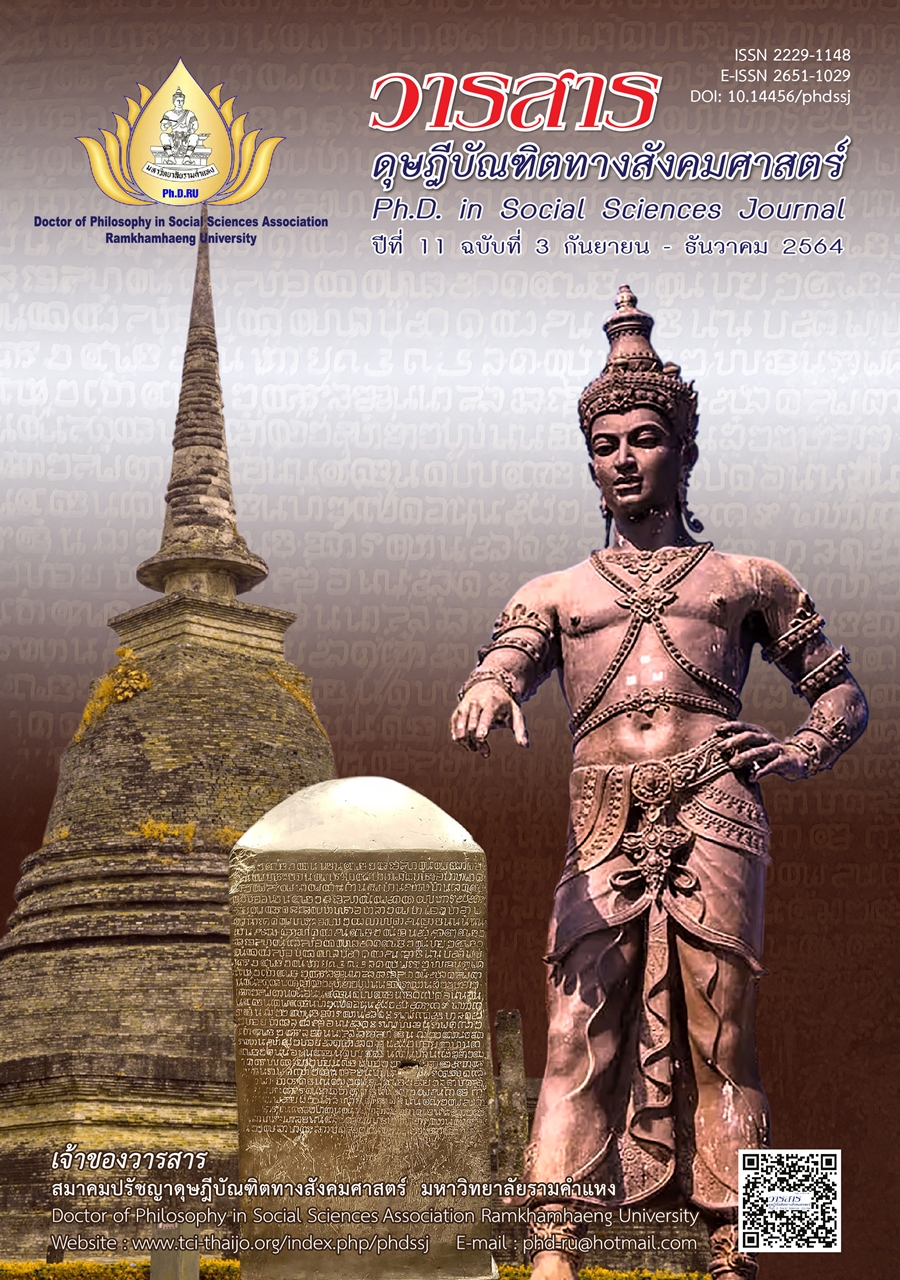Belief Communication for Existence of Chatri-Tentook Drama Folk Performing Arts in Chanthaburi Province
Main Article Content
Abstract
This research article aims to (1) survey the background belief of Chatri-Tengtook drama folk performing arts; (2) analyze elements of belief communication of Chatri-Tengtook drama folk performing arts; and (3) investigate approaches for sustainability of Chatri-Tengtook drama folk performing arts. Ethnographic Qualitative research methodologies in collecting data with a total of 61 target groups. Participatory observation, in-depth interview, and focus group discussion were conducted in collecting research data.
The results of this study are: (1) The background belief of Chatri-Tengtook folk performing arts have been influenced from Nora-Chatri drama, the folk performing arts of southern Thailand, under three spiritual characters. The uniqueness of Chatri-Tengtook drama is the perform of ‘Took drum’ rhythm. (2) The elements of belief communication Chatri-Tengtook folk performing arts were the intrapersonal communication due to psychic confidant, and the interpersonal communication, occurred via mutual experiences between senders, who are performers, and receivers, who are employers. The results of these communicative actions are confidence and power illustration among performing employers. (3) Four approaches of Chatri-Tengtook drama folk performing arts sustainability promotion are called “economic-belief reproduction, performer networks, arts of new media convergence, and study of local Thai culture”.
Article Details
Academic articles, research articles, and book reviews in the Ph.D. in Social Sciences Journal are author’s opinions, and not the publisher’s, and is not the responsibility of the Ph.D. in Social Sciences Journal Philosophy Association, Ramkhamhaeng University. (In the case that research is done on human, the researcher has to be trained in Ethics for Doing Research on Human Training and has to produce the evidence of the training).
References
Adiwattanasit, C. (2009). Sociology (14th ed.). Kasetsart University Press. [In Thai]
Arunthanya, S. (2015). Dynamic administration of school-based management in local cultural preservation: A case study of folk Thai drama “Lakhorn Chatree Tengtook,” Watnongkon school, Chanthaburi province. Journal of Educational Administration Burpha University, 9(2), 91-102. [In Thai]
Berlor, D. K. (1960). The process of communication. Holt, Rinehart & Winston.
Bott, E. (1957). Family and social network. Routledge.
Bourdieu, P. (1989). Distinction: A social critique of the judgment of taste. Routledge.
Chantavanich, S. (2012). Theory of sociology (5th ed.). Chulalongkorn University Press. [In Thai]
Chunsuvimol, B., Virasaya, J., Sermsri, S., & Junhasobhaga, J. (2018). Religion in society. Ph.D. in Social Science Journal, 8(3), 1-14. [In Thai]
Damrong Rajanubhab, HRH Prince. (2003). Figure of dance drama: Meeting-title of figure of drama and figure of dance book, legend of Inoa, legend of primitive drama. Matichon Press. [In Thai]
Dowding, K. (1996). Concept in the social science. Open University Press.
Frazer, J. G. (1925). The golden bough: A study in magic and religion. Macmillan.
Habermas, J. (1989). The structural transformation of the public sphere. MIT Press.
Mead, G. H. (1934). Mind, self, and society. University of Chicago Press.
Netphokeaw, A. (2018). Mediumology. Nakorn Press. [In Thai]
Rogers, E. M. (1973). Communication strategies for family planning. Free Press.
Ryder, N. B. (1965). The cohort as a concept in the study of social change. American Sociology Review, 30(6), 843-861.
Satsanguan, N. G. (2000). Cultural anthropology (4th ed.). Chulalongkorn University. [In Thai]
Spencer, H. (1868). Essays: Scientific, political, and speculative. Willams & Norgate.
Tylor, B. E. (1871). Primitive culture. John Murry.
William, R. (1981). Culture. Fontant Press.


